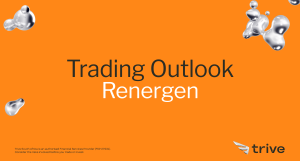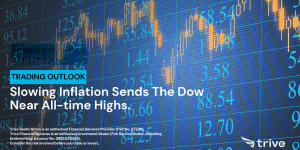
The USDZAR currency pair has been a focal point in recent weeks as it navigates through a landscape of shifting economic dynamics.
Over the past three weeks, the South African Rand has displayed remarkable strength against the U.S. Dollar, spurred primarily by remarks from Federal Reserve Chair Jerome Powell hinting at potential rate cuts in the United States. Despite a surprisingly high U.S. inflation rate of 3.2%, markets continue to anticipate a Federal Reserve interest rate cut in June, with a 59% likelihood priced in.
However, the Rand’s initial strength waned as local economic data revealed concerning figures. January saw a 3.3% year-on-year decline in total mining output, coupled with a substantial 12.7% drop in gold production. Furthermore, South Africa’s headline inflation rose to 5.3%, surpassing the South African Reserve Bank’s target range midpoint of 4.5%. Governor Lesetja Kganyago’s cautionary remarks suggest a potential need for prolonged higher interest rates to combat persistent inflation, potentially impacting the Rand’s trajectory. As traders await the Federal Reserve’s upcoming interest rate decision, the USDZAR pair remains in focus, poised for further developments in the global monetary landscape.
Technical
The USDZAR currency pair has recently experienced a shift in momentum, with indications pointing towards a short-term downtrend. This trend is evident as the pair dipped below its 100-day moving average, signalling a potential reversal in its previous upward trajectory.
Sellers entered the market at the 19.39086 level, coinciding with overbought conditions according to the Relative Strength Index (RSI), prompting a retreat in prices. However, support was found at the 18.50228 level, where oversold RSI conditions prevailed, indicating a possible reversal in sentiment.
Bullish sentiment seems to be resurfacing as the pair retraces from the support level, with buyers stepping back into the market. Currently, the pair has retraced to the 38.20% Fibonacci Retracement level, acting as an intermediate resistance. A retest of the 18.50228 support level is likely if selling pressures persist. Conversely, a breakout above the 38.20% level, accompanied by high trading volume, could signal intensifying buying pressures, potentially targeting the 50% Fibonacci Retracement level to the upside.

Summary
With shifting economic dynamics and technical indicators suggesting a short-term downtrend, the USDZAR pair remains volatile. Despite initial strength, the Rand faces challenges from local economic woes. Traders await the Federal Reserve’s decision for further insights into the pair’s trajectory, with critical support at 18.50228.
Sources: Statistics South Africa, CME, Reuters, TradingView
Piece Written By Nkosilathi Dube, Trive Financial Market Analyst
Disclaimer: Trive South Africa (Pty) Ltd (hereinafter referred to as “Trive SA”), with registration number 2005/011130/07, is an authorised Financial Services Provider in terms of the Financial Advisory and Intermediary Services Act, 37 of 2002. Trive SA is authorised and regulated by the South African Financial Sector Conduct Authority (FSCA) and holds FSP number 27231. Trive Financial Services Ltd (hereinafter referred to as “Trive MU”) holds an Investment Dealer (Full-Service Dealer, excluding Underwriting) Licence with licence number GB21026295 pursuant to section 29 of the Securities Act 2005, Rule 4 of the Securities Rules 2007, and the Financial Services Rules 2008. Trive MU is authorized and regulated by the Mauritius Financial Services Commission (FSC) and holds Global Business Licence number GB21026295 under Section 72(6) of the Financial Services Act. Trive SA and Trive MU are collectively known and referred to as “Trive Africa”.
Market and economic conditions are subject to sudden change which may have a material impact on the outcome of financial instruments and may not be suitable for all investors. Trive Africa and its employees assume no liability for any loss or damage (direct, indirect, consequential, or inconsequential) that may be suffered. Please consider the risks involved before you trade or invest. All trades on the Trive Africa platform are subject to the legal terms and conditions to which you agree to be bound. Brand Logos are owned by the respective companies and not by Trive Africa. The use of a company’s brand logo does not represent an endorsement of Trive Africa by the company, nor an endorsement of the company by Trive Africa, nor does it necessarily imply any contractual relationship. Images are for illustrative purposes only and past performance is not necessarily an indication of future performance. No services are offered to stateless persons, persons under the age of 18 years, persons and/or residents of sanctioned countries or any other jurisdiction where the distribution of leveraged instruments is prohibited, and citizens of any state or country where it may be against the law of that country to trade with a South African and/or Mauritius based company and/or where the services are not made available by Trive Africa to hold an account with us. In any case, above all, it is your responsibility to avoid contravening any legislation in the country from where you are at the time.
CFDs and other margin products are complex instruments and come with a high risk of losing money rapidly due to leverage. You should consider whether you understand how these products work and whether you can afford to take the high risk of losing your money. Professional clients can lose more than they deposit. See our full Risk Disclosure and Terms of Business for further details. Some or all of the services and products are not offered to citizens or residents of certain jurisdictions where international sanctions or local regulatory requirements restrict or prohibit them.




